Capsule Review: SteelSeries Apex M500 Gaming Mechanical Keyboard
by E. Fylladitakis on June 10, 2016 10:00 AM EST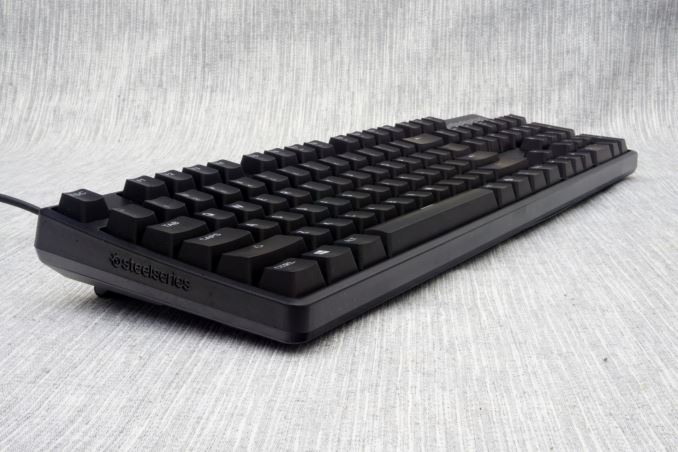
SteelSeries is one of the most reputable manufacturers of gaming-related peripherals and software. The company originates from Denmark and today has offices in the US and Taiwan. Even so, the company was a little late into the mechanical keyboards market, as they opted to focus on advanced membrane-based keyboards instead. Until recently, the company has been offering just one mechanical keyboard, the Apex M800 with their own custom QS1 switches.
The high price and, perhaps, the use of switches from an “unknown” source did do any favors for the popularity of the Apex M800, but it still had its own distinct user base. SteelSeries however is a company who is largely based and focused around the gaming community, so they rightfully felt that they ought to have at least one mechanical keyboard designed solely for hardcore and professional gamers. To that end, SteelSeries recently released the Apex M500, a high performance no-frills mechanical keyboard designed exclusively with that market group in mind.
Packaging and bundle
We received the Apex M500 in a very strong cardboard box that can withstand even the roughest of transportation services. The artwork is relatively simple, based on abstract geometrical shapes and a picture of the keyboard itself. Inside the box we only found the keyboard itself, protected inside a simply nylon bag. SteelSeries does not supply any additional parts, such as a wrist rest, extra keycaps or a keycap remover.
The SteelSeries Apex M500 Mechanical Gaming Keyboard
The designer of the SteelSeries Apex M500 truly tried to make it as simple and straightforward as possible. The body of the keyboard is plastic, with narrow rounded edges, and is sprayed with a matte black paint that is highly resistant to fingerprints. It is a standard 104-key ANSI layout keyboard with a 6.25× Spacebar and seven 1.25× bottom row keys. The keycaps are made from ABS plastic and have large, smooth characters. The company’s logo is printed at the top right corner of the keyboard, above the numpad.
Although there are no extra buttons on the Apex M500, a few additional functions are supported via the FN key that is replacing the right Windows key. While the FN key is being held pressed, the F5-F6 keys provide backlight brightness control and the F7-F12 keys offer basic media and volume controls. Other than that, the Apex M500 is just a standard 104-key keyboard. We would like to have seen at least a separate mechanism for sound volume control, but as a compromise of sorts the Apex M500 is a fully programmable model, so the user can reprogram any of the standard keys to perform such functions if that is a necessity.
For some strange reason, the designer tried to make the bottom of the Apex M500 aesthetically appealing. The plastic body forms an abstract, modern design, based on simple polyhedral shapes with rounded edges. A large, full company logo is engraved on the top left side of the keyboard’s underside. The rubber anti-skid pads are thick and very effective, providing very strong grip even on the most slippery solid surfaces. There are grooves for the routing of the cable to exit from either the center, left or right top side of the keyboard.
SteelSeries decided not to use proprietary switches on the Apex M500. The company went with the proven and very reputable Cherry MX switches instead. There currently is only one version of the Apex M500 available, with Cherry MX Red switches and blue LEDs. These switches are typically considered to be the best for gaming due to their linearity and low actuation force.
The blue backlighting of the Apex M500 is very strong and even. Blue lighting can be tiring for the human eye and the Apex M500 is blindingly bright at maximum intensity, so users will have to reduce it significantly for use inside dark rooms.
After we removed the plastic frame of the Apex M500, all that is left is the main PCB permanently attached on the blue steel frame that is supporting the keys. This is the standard and proven design of most mechanical keyboards, providing excellent mechanical cohesion and durability. The soldering job is excellent, with no flaws that we could find.
ST Microelectronics supplies the STM32F072R ARM microprocessor that is the heart of the Apex M500. It is a high performance 32-bit microcontroller with a maximum frequency of 48 MHz and 64KB of integrated Flash memory.


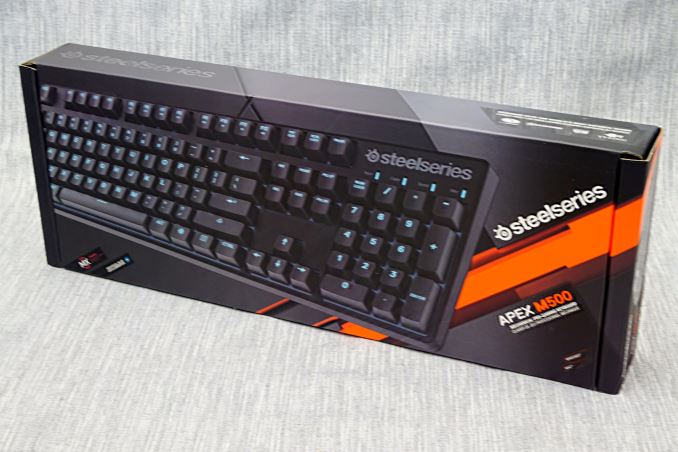
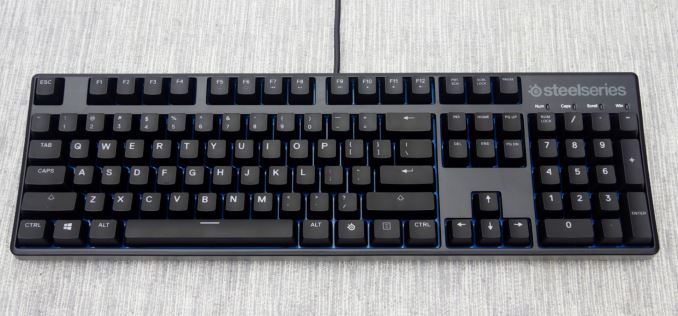
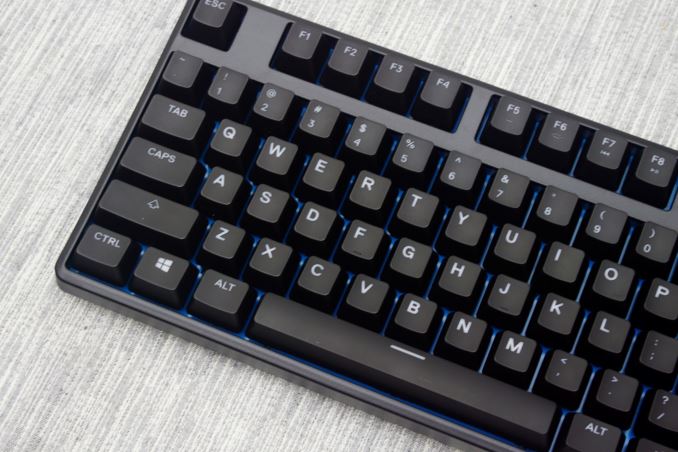
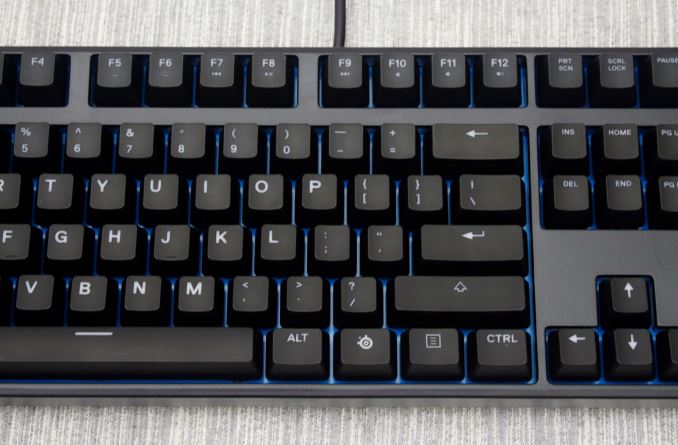
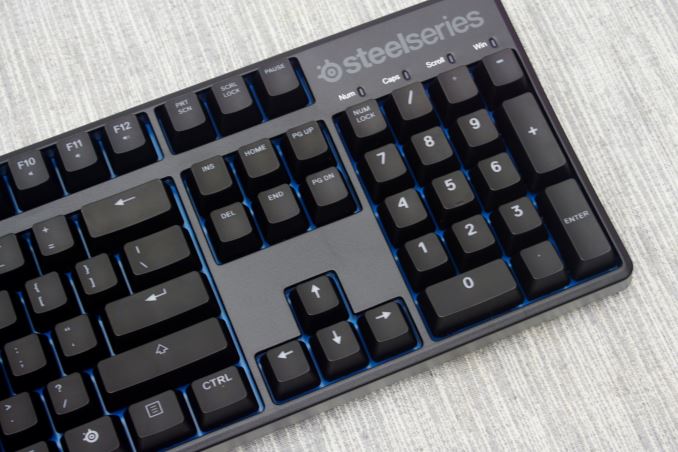

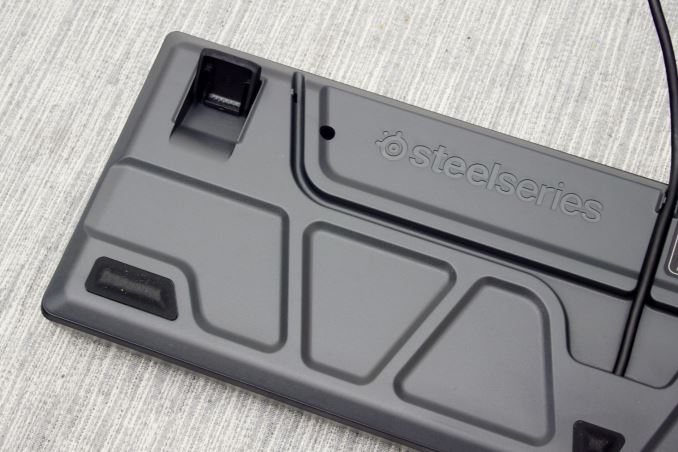


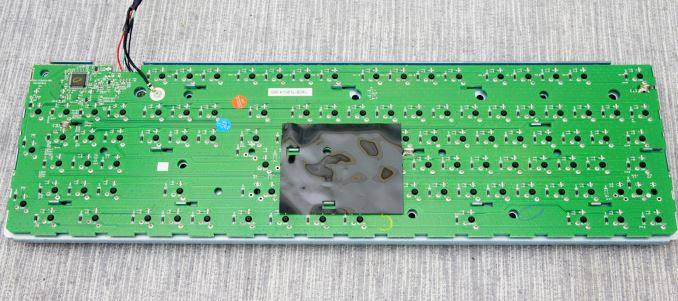









60 Comments
View All Comments
ddriver - Friday, June 10, 2016 - link
What's with those small return keys...Olaf van der Spek - Friday, June 10, 2016 - link
Return keys?You mean the standard Enter key? It's the normal shape and size...
ddriver - Friday, June 10, 2016 - link
http://i.imgur.com/sgfuu.jpgIt is a frequently used key and it is only logical it's size is extended. Keyboard where it is a "single line" key are very uncomfortable.
Olaf van der Spek - Friday, June 10, 2016 - link
Some prefer an even bigger Enter, some prefer the bigger Backspace and \ being in the 'normal' location.A single-line Enter is already one of the biggest keys on the board..
ddriver - Friday, June 10, 2016 - link
It boils down to whether or not you have a basis for comparison. Do you have to type a lot, and have you ever used an extended enter keyboard? It is a huge step back having to conform to a small enter key. Seems to be a US thing, another "convenience" like using imperial units together with other progressing states such as Liberia and Burma :)Inteli - Friday, June 10, 2016 - link
Yes and yes. The extended enter key is horrible. More often than not I type a slash instead of backspace because the Backspace keys on those boards are tiny. ISO/EU boards aren't any better because their keys don't stretch far enough left to be easily hit by the pinky.Different strokes for different folks, I guess, but most of us here in the US have adapted to the standard ANSI layout, and I find it perfect for me.
ddriver - Friday, June 10, 2016 - link
Tiny backspace seems to be another US oddity like the tiny enter.https://deskthority.net/wiki/ANSI_vs_ISO
The backspace is clearly not tiny, what's tiny is the left shift, which I find somewhat silly, since it is done only to accommodate a redundant slash key, already present on the keyboard elsewhere. Even if tiny it is not inconvenient for use with the pinky, so much so that I barely use the larger right shift, if ever.
The extended enter is a must for me, I'd never purchase keyboards or laptops without it. Good keyboards with good layouts are very rare in my experience, I have like 20 keyboards collecting dust, simply because each of them failed to improve on or even match my favorite keyboard, which I kind of "stole" - my father's company got it with a high end IBM server which didn't really needed a keyboard, much less a good one, so I replaced it. 18 years later it still works flawlessly, it has survived my pro gaming days (mainly quake 3 plus some other FPS) and several books. Built to last, which is very rare today, with most products carefully engineered to break soon after their warranty runs out.
Inteli - Friday, June 10, 2016 - link
If you look at the first picture you linked, you linked a modified ANSI board with a larger enter key, what Deskthority lovingly calls the "big-a**" enter key, and that was what I was referring to with the small backspace. An ISO board wouldn't work for me, since with my typing habits, I'd be pressing slash instead of enter, rather than slash instead of backspace.Clearly, we've learned to type on different layouts, and have grown different habits around them. I hit my enter key at its leftmost edge, which would make an ISO enter key an extra stretch for my habits. You obviously don't have such issues, and that's just fine.
By the way, if this keyboard is ever sold in your country, I can practically guarantee that it'll have an ISO layout instead of an ANSI layout. American website, American standard layout.
ddriver - Saturday, June 11, 2016 - link
Yeah, I recently watched a documentary about a community of oddballs in Turkey who spent all their lives walking on all four. They couldn't make them walk on their feet no matter what. And let me tell you, it wasn't like they were proficient walking on all four - they were very slow and awkward, like turtles. But still, its the way they prefer, cuz it is the only way they know.Unfortunately, while big PC vendors usually provide ISO layouts, this is very rarely the case with companies specializing in (decent, mechanical) keyboards. I suspect this is because their products, although exported to Europe, have not been manufactured with export to Europe in mind.
My local retailer has currently about 30 mechanical keyboard models on sale, and currently one 2 of them come with the extended enter key, sadly they look ridiculous and don't look like they are convenient for heavy typers.
Inteli - Saturday, June 11, 2016 - link
Your analogy implies that there aren't any proficient typers using ANSI keyboards.